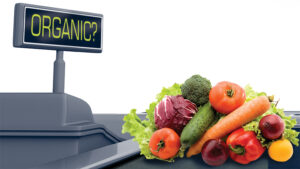
Perfect timing!
What perfect timing! Just an hour or so after beginning our lecture this morning on edible cannabis products, this article appeared on the Lincoln Journal Stat website.
As we noted in class, Delta-8 THC products are now being sold in Nebraska and have been considered by local authorities to be “quasi-legal”. But as reported in the article, Nebraska Attorney General Mike Hilgers has determined that these products “are mislabeled, they are untested and they are dangerous”.
Accordingly, he has filed lawsuits against retailers throughout Nebraska, including Lancaster County.
We’ll discuss this more next week.

Regenerative Agriculture
As noted in class, nearly every major food company has developed sustainability programs. Of course, for most of these companies, such programs are in their best interests. By saving resources, reducing waste, and using less energy, they not only enhance the environment and their communities, they also save money.
Now comes a new addition to these sustainability programs: regenerative agriculture. Although this sounds rather new, many farmers have, in principle, long adopted the practices of regenerative agriculture. As described in this article published earlier this year, regenerative agriculture relies on many of the farming and cultivation approaches that are taught in our agiculture courses here at UNL. These include use of cover crops and no-tilling land management, to use of compost and managed grazing. These practices promote soil richness, reduce water and irrigations requirements, and may even improve carbon capture from the atmosphere.
General Mills, one of the largest U.S. food companies intends to use regenerative agriculture for up to 1,000,000 acres by the end of the next decade. Indeed, “global responsibility” is now part of their overall corporate strategy.

The western food industry in the developing world
We have been discussing how the food industry can play an important role in addressing the world hunger problem. Food scientists certainly know how to preserve foods and reduce spoilage and waste. Food scientists know how to develop pasteurization and other technologies to make sure foods and beverages are safe.
One concern of some nutritionists, however, is that some food companies may also view the developing world as just another market. As noted in this 2016 article, the authors suggest that globalization, urbanization, and technological progress may lead to many of the same Western diseases that afflict the developed world.
In other words, they ask, does the introduction of salty snack foods or sugary beverages really improve the lives of the intended populations? They contend that sales of highly processed foods in Latin America, Africa, and the Middle East grew at rates 25 – 30 times that of North America. Soon they predict, obesity will be a problem, even while malnutrition remains a serious problem.
It will certainly be a challenge for people in developing countries to avoid western diet temptations. Otherwise, it will be just one more case where the cure is as bad as the disease.

Global warming and Prof’s nightmare
As we will discuss in class, climate change is already affecting important agricultural products. Whether its drought or warming or sunlight hours, these changes can have profound effects on crops as well as in animal agriculture. Unfortunately, several of these products are very dear to me, personally.
Among the products perhaps most sensitive to a change of just a degree or two are wine grapes. Interestingly, as noted in this series of papers from 2016, there will be winners and losers. The reason why Cabernet Sauvignon grapes do well in Bordeaux, for example, is because the temperature, moisture, and sunlight hours are perfect for that particular grape cultivar in that specific region of France. If the climatic conditions are altered, then those grapes will not have the proper level of sweetness, acidity, or color necessary to make a good Bordeaux wine. The same considerations exist for other grapes grown throughout the rest of the world. Of course, as the temperature rises, colder regions (Nebraska?) may become the “new” Napa Valley. A real example, according to this paper, is in Hungary, where climate change may be considered a “positive” for one of their major wine-growing regions.
Then there are my two other “cannot-get-through-the-day-without” foods – coffee and chocolate. The growth of cocoa and coffee beans is also sensitive not only to temperature, sunlight, and moisture, but also elevation. Climate change will force farmers to move their plantations to more conducive elevations. This article points out that farmers in Central America and other coffee and cocoa-growing regions are poor and may not have the option to re-locate their farms. The authors also note another very important and often neglected collateral effect of climate change. Specifically, there are pests, both fungal and insects, of these products that may thrive and even spread as the temperature increases.
I can hardly imagine living in a world without wine, coffee, and chocolate. If I hear that the future of Bourbon is also threatened, well, that would really be the end of Western Civilization.

Impossible backlash?
You would probably not be surprised to hear that there has been plenty of criticisms about plant-based meats. We briefly discussed the labeling issue, and that has certainly been one source of contention. The meat industry has also argued that the environmental impact of animal agriculture has been over-stated and that the industry has adopted effective mitigation programs. Besides, the environmental “halo” for plant-based meats may not be warranted, according to this NY Times article.
But perhaps the most critical complaints are coming from surprising places. Specifically, vegetarian friendly Whole Foods and Chipotle, as well as several nutritionists have criticized Impossible and Beyond Meat products for their less than stellar nutritional profile. They are, critics claim, heavily processed, contain a long list of ingredients, including GMOs, and they are expensive. That they are so close to the real thing for flavor, texture, and color do not impress the critics who do not like their fake-ness.
There is even a backlash to the backlash, with this article claiming that the critics simply do not get it.
Image: New York Post

Plant-based milk and meat, GMOs and millennials
A few years ago, I attended the Annual Meeting of the Society for Industrial Microbiology and Biotechnology. One session featured lectures on how microbes and tissue culture cells can be used not only to make foods like meat and milk, but also plant-based leather and silk products.
The lecturers noted that these products are particularly appealing to Gen Z and Millennials. According to their marketing research, this appeal is due, in part, to concerns about sustainability, climate change, animal welfare, and other environmental or altruistic issues.
What I found interesting is that many of these food and non-food products are made via GMO technology. For example, you may be surprised to learn that the Impossible product line is GMO. Thus, it’s a bit of a conundrum, since conventional wisdom is that many of the consumers who are attracted to plant-based animal products are the very same consumers who are also opposed to GMO.
Evidently this may not the case, especially for Millennials. Can you explain this?
Image from thespoon.tech

The Food Allergen Generation
During one of the earlier lectures, we discussed how food science has changed in the past century, the past 50 years, and even in the past 20 years that you’ve been around.
For your generation, in particular, the food allergen issue is one you’ve been hearing about probably since you were in 1st grade. But for your parents’ generation (and certainly mine), we never heard of food allergies and never knew that a person could get sick (or die) from eating peanuts. Before your generation, there was no labeling and the food industry paid little attention to this issue.
This situation, as you know, is completely different. Starting this week, Dr. Joe Baumert, one of the leading experts in this area, will explain how we got to this point. He will also lead you through case studies so you have a sense of the sometimes difficult decisions a food company could have to make when faced with the prospect of multi-million dollar recalls.

Organic fraud
While I was at Whole Foods last week, I compared the organic apples with the conventional apples. They looked the same and may have tasted the same. Of course, the organics cost about 30% more. But really, other than price, the only thing that distinguished these apples was the display sign that said ‘organic’ and the annoying little sticky things on each apple.
I doubt, indeed I am sure, anyone at Whole Foods, the produce distributor, or the FDA actually tested these organic apples to ensure they were organic. For what would they even be testing? Residual pesticides, perhaps, but what if they were very low? Would that have meant they had been sprayed? What if the orchard down the road had sprayed and the pesticide drifted in the air to the neighboring orchard?
You get the point – it is difficult if not impossible to tell. That’s why the USDA has a strong certification program with farm or plant inspectors, required documentation, etc., to ensure organics are really organic.
Unfortunately, however, there is a lot of fraud, worth millions and millions of dollars. Indeed, the organic premium provides incentive for unscrupulous producers to commit organic fraud. That’s why, when someone is caught, the punishment is severe, including large fines and jail time.
Indeed, some recent examples are provided here, here, and here:
Image: www.growingproduce.com

Food icons go organic
The list is long, so hold on to your peanut butter and jelly sandwich. As we will discuss in class, the organic category has become so large that almost every major food company has introduced, at one time or another, their own organic product line. Below are some of the most recognizable food products, each with their own organic version.
Hunts Tomatoes, Healthy Choice, Orville Redenbachers, Pam,Gatorade, Heinz catsup, Heinz beans, Triscuits, Ritz, Fig Newton, Chips Ahoy, Dole bananas, Welch’s grape juice, Rice Krispies, Raisin Bran, Lay’s Potato Chips, Tostitos, Cheetos, Gerber’s baby food, Dannon yogurt, Campbell’s Soup, Lean Cuisine, Pepperidge Farm Goldfish, Smucker’s jelly, Smucker’s peanut butter, Tropicana orange juice.
Note, many of these brands did not exist long and have been discontinued. Can you think of any reason why?

Organic everything – way beyond apples
As we begin our discussion on organic foods, we will address the reasons why so many consumers are willing to pay a premium for these foods. One of the main reasons is that organic foods are thought by consumers to be healthier than conventional foods. We will review the actual data on this question, but regardless, this perception certainly exists.
It’s interesting that by attaching an “organic” label to a food, it suddenly becomes healthy. Cookies, cake, ice cream, candy bars, potato chips – you name it, there is bound to be an organic version.
From the “you can’t make this up” file, there is even organic tobacco. Indeed, in the tobacco-growing state of Virginia, tobacco has become one of the main organic commodities produced in that state.
Now I know organic versions of wine and beer are available, but as I was writing this I thought what could possibly be next. Organic marijuana edibles, perhaps? Sure enough, they are widely available in California, Colorado, Washington and other states where recreational marijuana is legal. Some contain THC and others CBD (the bioactive chemical components). But be advised, they are not cheap. The organic CBD infused dark chocolate bar shown on the image cost more than $20!
